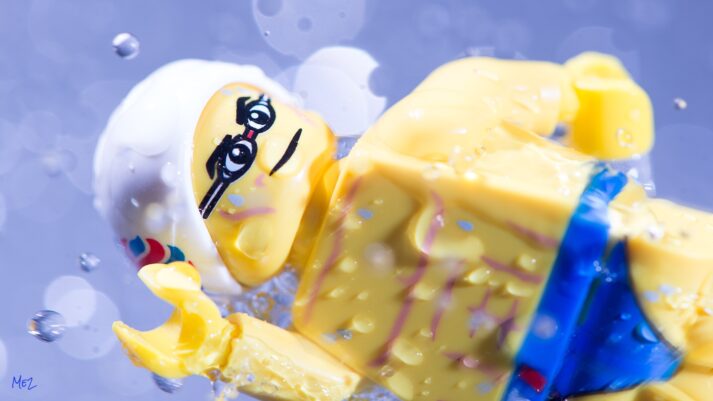This
post was originally published on
this siteOriginally posted at: http://www.nerdfitness.com/
I have a lot of people ask me, “How many reps should I do per set?”
Unfortunately, there’s no easy, perfect answer to this question without a little more information, but I’m going to do my best to dig into the nitty gritty with today’s article and get you fixed up!
Regardless of what type of strength training you’re doing, having specific sets and reps to aim for will help you reach your goals. After all, as they say, what gets measured gets improved.
What you need to figure out is what you really want to accomplish.
Some people’s goals are to lose weight, which would require a certain rep range, and others’ goals are to build muscle mass, which requires a different range as well.
Think about the physique of a sprinter or bodybuilder versus a marathon runner. A sprinter is built for power and speed in short bursts, so their training sessions exist in small increments (10 second races).
A marathon runner is built for endurance, which means their training sessions are much longer (hours at a time).
Working out is no different.
I’m gonna go out on a limb and assume you’re reading this article because you have approximately one million questions about how you should be training in the gym. Should you do different muscle groups each day? Should you do 5 sets of 4 or 4 sets of 5? What about Starting Strength? Is it the most useful advice ever created? And how do you know you have good form on your squats and deadlifts?
These are all great questions, and they’re the same questions I asked when I got started. Unfortunately, I was an idiot and spent 6 years training the wrong way in the gym before I finally cracked the code and got stronger and healthier.
I’m guessing you don’t have 6 years to struggle as I did, or you’re just looking for expert guidance and accountability. Which is why we created our 1-on-1 Online Coaching Program! You’ll get paired with a coach that gets to know you and your life, creates a workout program for you, and helps keep you accountable and can answer all of the questions you might have about this stuff.
You can learn more about the program by clicking in the image below to schedule a call with us!

How many Reps should I do?

“Rep” stands for “repetition” and defines one complete motion of an exercise. When deciding on how many reps to do, first and foremost, decide below what you want to get out of a workout. Then read how to get there. We cover this stuff in significantly greater detail over in our Strength Training 101 intro, but the content below should get you started.
We’ll group different rep ranges into different goals, for muscular endurance, muscle size, and overall strength and power. It’ll get us thinking about endurance vs. hypertrophy.
Let’s chat about the following:
1) Muscular endurance – Endurance means we want your muscles to perform for an extended period time. Thus, your heaviest sets should be greater than 12 repetitions. Aim for a range from 12 to 20 reps. Obviously you won’t be able to lift heavy amounts of weight for 20 reps, so you’ll be lifting lighter loads. Also, because you’re going for endurance, you want to decrease the amount of rest between sets. 30 seconds to a minute, but certainly no more. You want your muscles trained to be ready to constantly be putting forth effort and prepared for the long haul. If you are a runner or cyclist, strength training with higher repetitions can help your muscles develop more endurance as well!
- Reps for increased muscular endurance: 12 plus
2) Muscle Size ( Sarcoplasmic Hypertrophy) – This is for guys or gals looking to build muscle size.
Sarcoplasmic hypertrophy focuses on increasing the amount of sarcoplasm, the non-contractile fluid found in your muscle. Up to 30% of your muscle’s size is attributed to the sarcoplasm, so focusing on this type of hypertrophy helps build overall size.
If you’re looking to get bigger, you want to keep the number of reps per set in the 6 – 12 range per set. I find this is best accomplished by doing between 3-5 sets, each time increasing the weight and decreasing the reps. (12 reps at 200 lbs, 10 reps at 220 lbs, 8 reps at 240 lbs, etc.)
Rest time between sets should be short, not as short as for endurance, between 60 and 90 seconds.
- Reps for increased muscle size: 6-12
3) Strength and Power (Myofibril hypertrophy) – If you’re happy with your size, or you’re training for specific sports and just want to get stronger with more power, this is for you. This type of training focuses on strengthening the myofibril, the contractile part of the muscle. However, not only are you shocking your muscles, you’re also putting a lot of pressure on your body’s central nervous system. This forces it too to adapt and become stronger, critical for strength and power.[1]
It should be noted, that given proper nutrition, you’ll still develop some muscle and size with high weight and low reps. It just isn’t the primary goal.
For strength and power, your reps are going to be less than 6 with each set, and an increased amount of time waiting between sets (2-3 minutes). You’re going to be lifting crazy amounts of weight for sometimes just 1 repetition, so you need to have a spotter and absolutely perfect form or you could severely hurt yourself. This is how powerlifters train. Low reps, high weight, long time between sets. You need to increase your rest period because lifting this heavy fatigues the central nervous system and you’ll need longer to recover.
- Reps for increased strength and power: Less than 6
How many Sets should I do?

A “set” describes a group of repetitions performed for an exercise without stopping.
For example, if you drop down and do 10 push-ups right now, you just did 1 SET of 10 reps of push-ups.
How many sets should you do? In the section above, I mentioned doing “3-5” sets of a given exercise. This is a good rule of thumb in general.
Why?
It’s a rule of thumb with an origin story.
3 sets became popular in 1948 when the physician Thomas L. DeLorme suggested 3 sets of 10 reps to be an effective form of weight training. Delorme came to his conclusion after prescribing strength training to his injured patients, as a way for them to rebuild muscle and rehabilitate. He recorded and analyzed their improvements. When Delorme published his findings, it was one of the first academic looks on how to strength train. As one of the pioneers, Delorme’s recommendations stuck and became “permanently etched into the collective subconscious of the fitness community.”[2]
That’s the history of 3 sets at 10 repetitions…
Which is certainly more information than you needed. Sorry.
Anyway, don’t overthink how many sets to do. Don’t stress yourself out by worrying if you should do 4 sets or 3 sets. Pick one, record how you do with it, and get stronger the next time you do that movement.
It should be noted, there is evidence of more sets performed leading to more gains, in both endurance, size, and strength.[3] Which makes sense, because you are forcing your muscles to do more work overall. After your third set, if you feel like you can do a fourth, it might be a good idea to try it. Or a fifth. Any more than that, and you should be thinking about increasing your weight instead.
- Rule of thumb for the number of sets to do: 3-5 after a warm-up.
Exception: if you are doing endurance work, you may want to do only 2 sets with more reps. Less recovery time will test your muscle’s endurance.
Building a routine!

Now that you have “edumacated” yourself on how your specific goals influence the number of reps per set, and what sets actually are, you can build your workout program around this info.
Don’t want to build your own routine? Not sure what sets and reps to do? Want to remove all the confusion and be told what to do? I got ya! Download our free, comprehensive Strength Training 101: Everything You Need to Know, as we dig into the answers of all those questions 🙂 I’ll send it to you right away after you sign up for the Rebellion in the box below:
Download our comprehensive guide
- Everything you need to know about getting strong.
- Workout routines for bodyweight AND weight training.
- How to find the right gym and train properly in one.
There’s a lot of different truths and fallacies on plateaus and how your muscles can get “used” to working out and stop growing. If that’s something you’re battling, here’s a way to keep them guessing or send your workout program into a jolt:
Spend a week in a different rep range with different amounts of weight to throw them off. You can go with less weight and more reps. Or vice versa. Experiment with both. This will introduce a little chaos into the system, which could be a good thing, unless you’re Batman.

After a week of mixing it up, go back to your regularly scheduled routine and you’ll be right back on track.
Make sure you know what you want, and then design a plan to get there.
-Steve
PS: If you’re somebody that wants an expert to guide them through the training process, I hear you. I have a fitness coach myself who programs my workouts!
IF YOU WANT TO BE TOLD EXACTLY WHAT TO DO:
- Consider our 1-on-1 coaching program where we’ll build a powerlifting and nutrition program for you based on your situation and current level of experience, with video form checks and expert guidance.

- On a bit tighter of a budget? No problem! Check out our self-paced online course, the Nerd Fitness Academy, which eases you into strength training with both bodyweight and gym routines.
###
All photo citations can be found right here[3]




























 For now classes are 6pm and 640pm at 2840 Wildwood st in the Boise Cloggers studio.
Book your class NOW!
click this ==>
For now classes are 6pm and 640pm at 2840 Wildwood st in the Boise Cloggers studio.
Book your class NOW!
click this ==>








